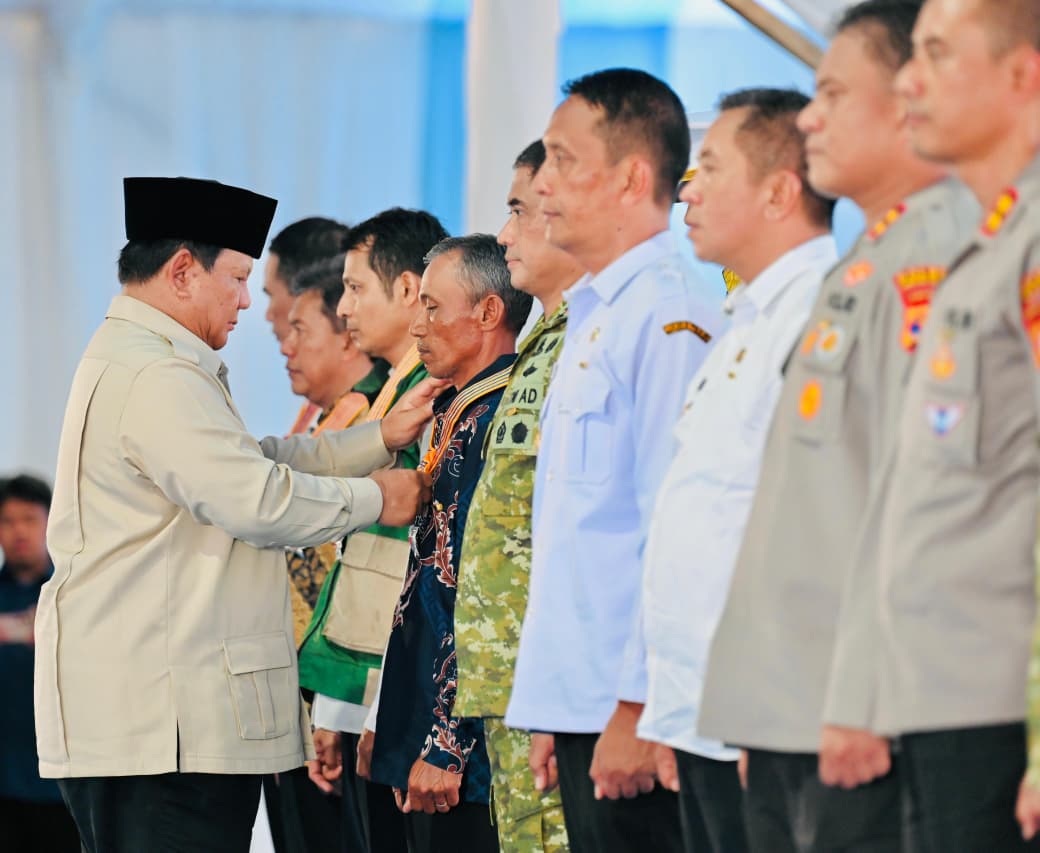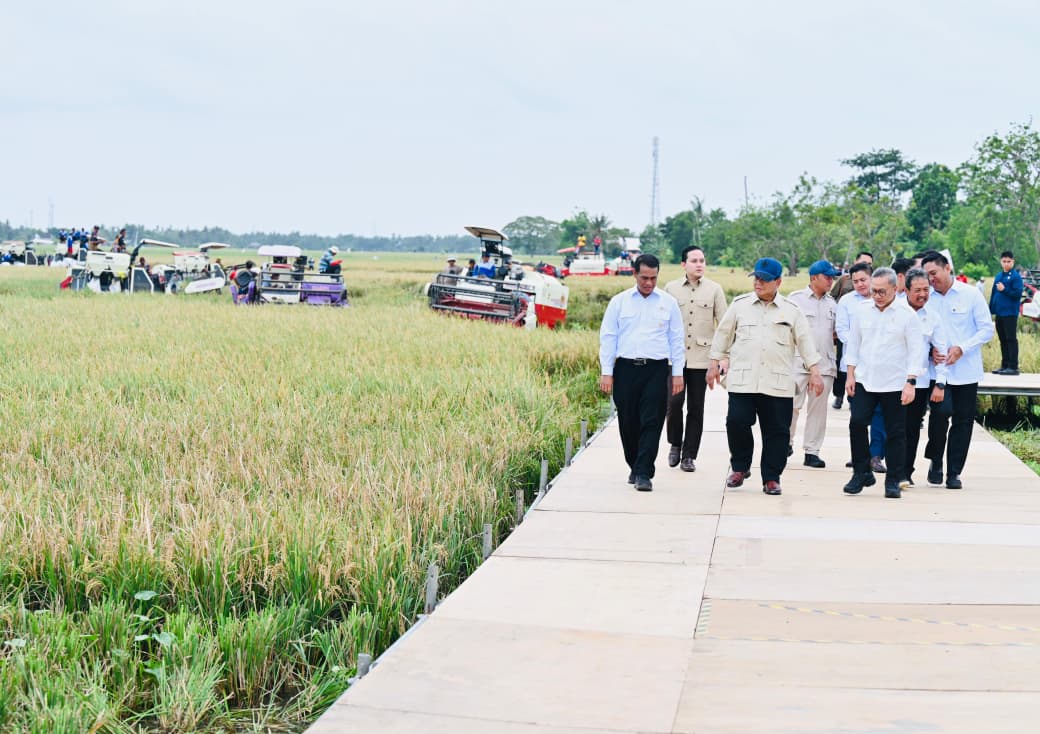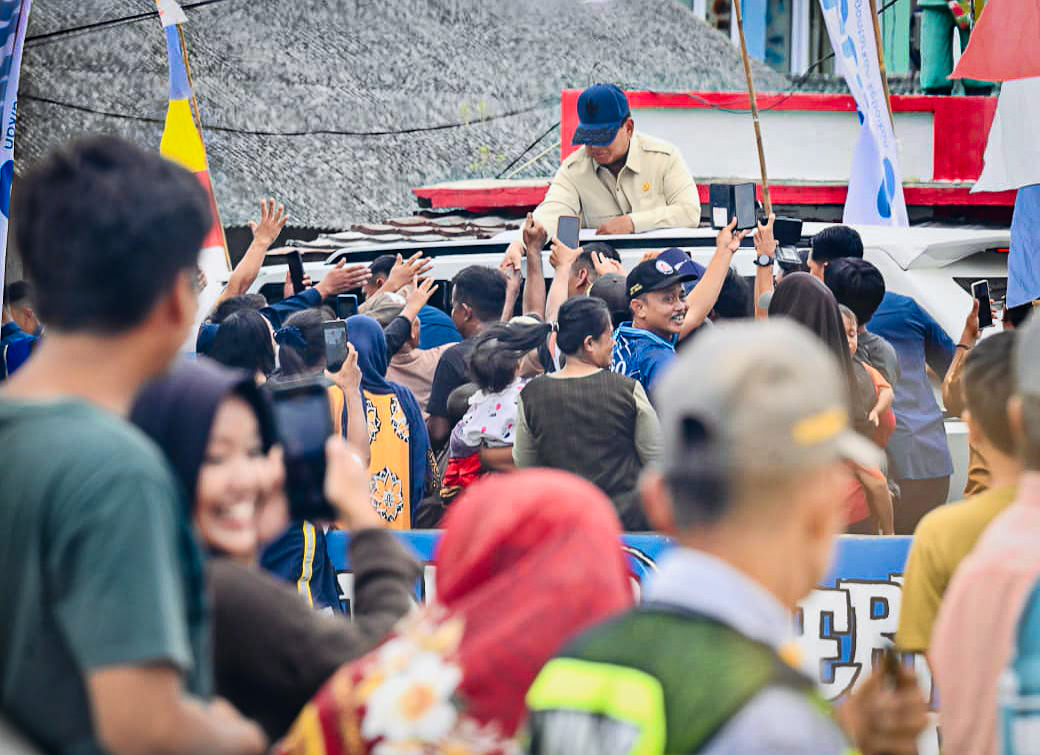Village Funds to Reduce Poverty in Villages, Minister Says

Minister of Villages, the Development of Underdeveloped Regions, and Transmigration in the 4-years Report on Joko Widodo-Jusuf Kalla Administration, Wednesday, (24/10) (Photo: PR/Oji)
Minister of Villages, the Development of Underdeveloped Regions, and Transmigration, Eko Sandjojo, said that for the last 4 years, the Government has disbursed more than Rp187 trillion of village funds as a commitment to reduce inequality and poverty, especially in villages.
Absorption of village funds continues to increase from 82% in 2015 to 97% in 2016, and 98% in 2017. This increase shows that administration in villages is getting better, said the Minister.
The success of village fund management, according to the Minister, relies on mentoring. We have nearly 40 thousand village facilitators scattered throughout Indonesia who continuously provide assistance to village officials. In addition to that, we are also cooperating with the Police, the Office of Attorney General, and other institutions related to business and banking, he added.
According to Eko, his Ministry also collaborated with the Higher Education for Village Forum consisting of 100 universities in Indonesia with the Rector of Bandung Institute of Technology as Chairman and Rector of Veteran University Surabaya as Vice Chairman. Through this program, every year we send 75,000 university students to conduct field study in villages which also give assistance to the villagers, said the Minister.
The use of village funds, according to the Minister, were to build more than 1,000 km of village roads, tens of thousands of early childhood education, village maternity clinics, maternal and child health services, nearly 1 million units of clean water facilities and 75 thousands sanitary units. After those priority facilities have been completed, Eko continued, the village began to build infrastructures for economic empowerment, such as roads, irrigation channels, markets, boat moorings, early childhood education and village-owned enterprises so that after 3 years there was a significant growth of GDP of the village.
In 2014, the Minister continued, Indonesias GDP per capita according to the Central Statistics Agency (BPS) data was only Rp540,000 per month, then in 2018 it was raised to Rp800,000 per month or raising almost 50%. If we can maintain it, in the next 7 years, Indonesias GDP per capita in the village is projected to be more than Rp2 million per month. If that happens, the village will be able to contribute US$1 trillion of total GDP, equal to Indonesias GDP today, he said.
In addition to reduce poverty, according to the Minister, the distribution of village funds can also reduce both the Gini Ratio and open unemployment rate. The Gini Ratio of the villages dropped from 0.48 to 0.39, while the open unemployment rate in the village is at 3.72%, smaller than the city which stood at 5.73%, he added.
On that occasion, the Minister also conveyed about the Rural Area Superior Product Program (Prukades) which combined programs from 19 ministries in the village whose budget is more than Rp500 trillion.
The Minister added that as an example, Pandeglang District as one of the programs, was planting 50 thousand hectares of corn, assisted by Ministry of Agriculture to provide seeds, fertilizer, free tractors, and incentives to the farmers.
Ministry of Public Works and Public Housing provided 11 bridges in the District, Ministry of State-Owned Enterprises through Bank BNI assisted creditors for three months of living expenses and invited several businesses as post-harvest off-takers. This year, Pandeglang District is predicted to harvest more than 500 thousand tons of corn, Eko said, adding that Pandeglang District was targeted to get Rp1.5 trillion from the corn sales.
The Government, the Minister continued, according to the Medium-term Development Planning (RPJM) is targeted to reduce the underdeveloped villages to 5,000 and raise 2,000 villages to become independent. This year we have succeeded reducing nearly 10,000 underdeveloped villages and more than 2,000 villages have become independent. So the RPJM target has been exceeded, Eko said.
This village development model, Eko added, was appreciated by numerous countries in the world at the IMF-World Bank Annual Meetings thus this program will be implemented by World Bank and VAT in other developing countries.
World Bank has sent 6 countries with 23 representatives to study the village fund processing in Indonesia. This model served as an example because we identify all stakeholders in the village, including the community, regional heads, businesses, banks, and so on and accommodate their common interest, the Minister concluded. (MAY / EN)
Translated by : Estu Widyamurti
Edited by: Yuyu Mulyani







